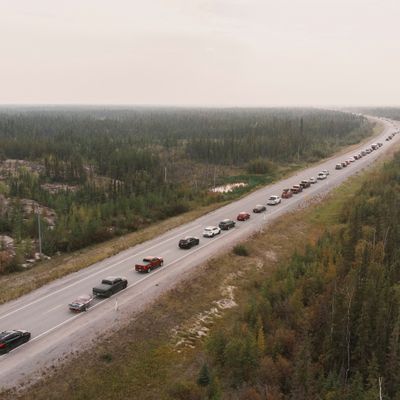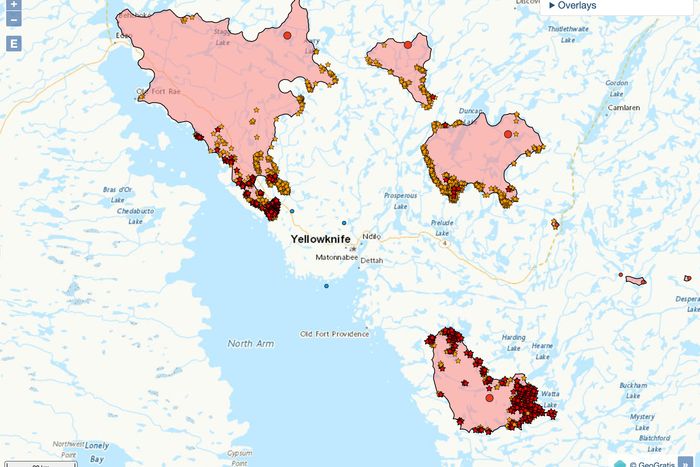
An extraordinary exodus is underway in northern Canada, where a massive approaching wildfire has prompted authorities to order the mandatory evacuation of some 22,000 people from Yellowknife, the capital city of the Northwest Territories, and several surrounding communities. Residents of the remote city, which is located on the shore of the Great Slave Lake about 250 miles south of the Arctic Circle, have been told to leave by 12 p.m. local time on Friday. This time of year, the only ways out of the city are by air or via a single highway — which goes through the fire zone.
The unprecedented evacuation, which affects almost half the population of the Northwest Territories, is one of the most dramatic consequences of the widespread wildfires which have consumed a massive amount of Canada’s northern wilderness this year and have periodically inundated numerous American cities with hazy skies and air-quality warnings. The evacuation also comes a little more than a week after fast-moving wildfires devastated parts of West Maui in Hawaii and killed more than 100 people. In that case, residents were given little warning of the fast-moving inferno. In Yellowknife, the evacuation order went out days before the wildfire may reach the city. That extra time is all the more important when considering how remote Yellowknife is.
“I want to be clear that the city is not in immediate danger and there’s a safe window for residents to leave the city by road and by air,” Northwest Territories minister of environment and climate change Shane Thompson said Wednesday when the evacuation order was issued. Firefighters have been fighting the approaching wildfire for more than a month, but have been unable to stop its advance. As of Thursday, it was about ten miles from Yellowknife. Nearby towns are also being evacuated, including two Dene First Nation communities. If there isn’t rain, authorities expect the fire to reach Yellowknife as soon as this weekend. In the meantime, firefighters are preparing more defenses at the perimeter of the city.
Commercial flights out of the city are largely sold out, but the Canadian military began air evacuations on Thursday for people unable to find rides out over land, as well as hospital patients and others with serious health conditions. For everyone else, Highway 3 is the only way in or out of Yellowknife. It runs through the fire zone to the city’s northwest, but authorities have insisted the highway is safe all the way to Alberta, for now, and have set up fuel tankers to refuel vehicles along the way, and they have arranged pilot vehicles to escort drivers through the sections where visibility is poor due to the wildfire smoke.
Nearly 240 of the more than 1,000 active wildfires in Canada are located in the Northwest Territories. Those fires have already displaced the residents of multiple other N.W.T. communities, including Fort Smith, Hay River, the Kátł’odeeche First Nation, Enterprise, and Jean Marie River.































